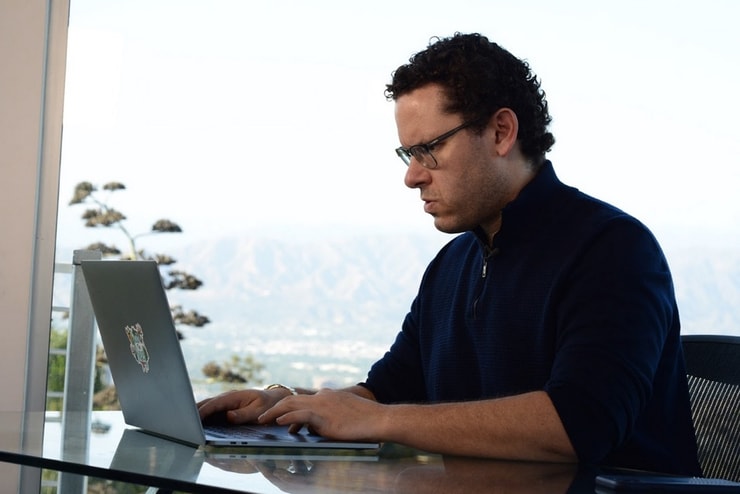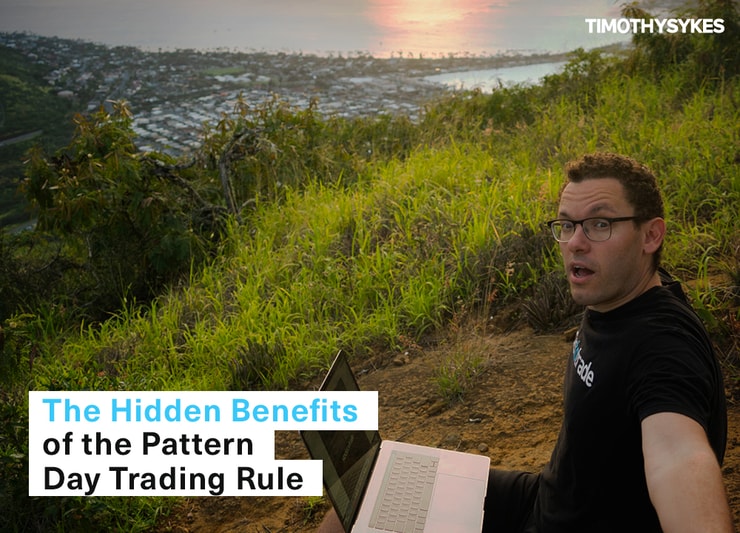I hear it all the time — “The pattern day trader rule is just too restrictive.” I completely disagree.
Every year, new traders enter the stock market with false hopes of making millions overnight. Many enter the profession for the wrong reasons, only to quickly blow up their accounts and give up.
I’ll be the first to admit that trading isn’t easy.
It requires hours and hours of studying and total dedication. Even then, some just won’t make it in the markets.
It took my top student Tim Grittani nine months before he became a profitable trader. He also blew up his first account. But he started with money he could afford to lose, which allowed him to try again. As a result, he recently passed $8 million in total trading profits from his first $1,500 account.
So, why am I writing this post?
Well … recently, I came across this petition on Twitter to remove the pattern day trader (PDT) rule. I respect the passion these traders have, but let me be very clear…
This is a terrible idea.
Many of you are familiar with the PDT rule. It limits the number of round-trip trades an individual can take if their account is under $25,000. In other words, if you don’t have $25,000 in your trading account, you’re limited to three day trades per week.
For many in the trading community, this restriction is controversial. But I think it’s the best possible rule for newbies. Let me explain…
Table of Contents
The Importance of Starting Under the PDT
The pattern day trader rule is only applicable to U.S. citizens, but everyone should heed this advice. The unfortunate reality is that 90% of people who attempt to become day traders will lose. For many, that statistic will stop them from even trying…
… but you aren’t reading this because you’re a quitter.
Starting under the PDT can come with a safety blanket — one that many people take for granted. First, if you’re a smart trader, you’re starting with money that you can afford to lose. For most people, blowing up a small account won’t mean drastic life changes.
If losing your trading funds will dramatically change your life, I advise you to save up more money before you start trading. The additional stress of trading with money you need to pay your rent or electricity bill won’t help you become a profitable trader.
Like I just mentioned, 90% of traders will lose … so be smart and give yourself the best chance of success by NOT trading with money you can’t afford to lose.
Prevents Blow Ups
The limitation of day trades by the PDT is a blessing in disguise. Newbies don’t know how to trade correctly and don’t understand trading rules.
My Trading Challenge can help expedite the trading learning curve, but it can still take months — or even years — before the lessons really sink in. So really, the PDT can protect people from themselves.
Think about it for a minute. If 90% of new traders lose money, why should they have the freedom to trade as much as they want? They’d only lose more money faster, and they’d have to leave the industry too soon.
Some newbies would even blow up their accounts on the first day because they have no discipline or trading rules.
I get that the PDT can feel like a limitation, but I guarantee the rule protects most traders from themselves. As a newbie, you have to earn the right to be over the PDT by taking consistent profits and growing your account over time.
More Breaking News
- WNS Surpasses Market Expectations with Strategic Alliance and Recognition
- Roblox’s Growth: Potential or Just Hype?
- Trip.com Group Strengthens Investment Footprint with MakeMyTrip Share Repurchase Deal
There’s nothing worse than seeing a student start over the PDT, ignore all my lessons, and lose half their account. But that wouldn’t happen if people started slowly and kept their accounts under the PDT. Trading is a marathon, not a sprint.
More Study Time

2025 Millionaire Media, LLCMost of the time, newbies are completely unaware of what they don’t know or understand. They think they’re smarter, more prepared, and better traders than people who have been studying for years and continuously working on their strategies. Don’t get me wrong, there are some golden students, but they’re one in a million.
My students all had to work hard for their consistency … and it took time. I already mentioned Grittani, but Roland Wolf, Dominic Mastromatteo, Micheal Hudson, Jack Kellogg, and Kyle Williams all also started below the PDT. It took them months (some of them years) to study and fully understand the patterns I teach in the Trading Challenge.
They aren’t the smartest people in the world, but they aren’t dumb by any means. When you first start trading, you can’t expect to make millions in your first couple of months or years. It takes time. You need to fully understand the basics before you begin to use more size and risk more money.
Check out Dom’s recent interview on Steady Trade about making it over PDT:
Use the PDT to Your Advantage
Think of the pattern day trader rule like the governor on a golf cart. The purpose of the governor is to keep people safe from their poor driving abilities. People don’t naturally know how to drive a golf cart perfectly. And if anyone could just gun it and go 100 miles per hour on a golf cart, there’d be so many accidents and fatalities.
So like the governor, the PDT forces people to slow down and hone their skills before they begin trading with large size. It’s a necessary precaution, and I’m glad it exists.
Instead of overtrading, which only wastes time and money, my top students embrace the PDT rule. They use their downtime to study more often. I tell students all the time…
“A medical degree takes eight years to complete, and then doctors still have to go through residency. That’s nearly 12 years of training. Why should trading be any different?”
But too many people want to get rich quickly instead of taking it slow and doing it correctly. I advise all my students to start watching more of my DVDs to learn the basics. After that, I have over 6,000 video lessons with live examples of trading concepts and strategies. If you’re in my Trading Challenge, you should also watch all the Challenge webinars.
That’s a lot of content!
It took Roland nearly an entire year to make it through the content. Jackaroo didn’t trade for a whole year while he was learning. Becoming successful won’t happen in a week. Take your time, take notes, and digest the information.
If you’re just getting started, study my FREE penny stock training guide.
Narrow Your Focus
Once you understand the fundamentals, it’s time to start trading. But remember, you’re under the PDT rule. You can only take three day trades during any five-day period.
So how can you handle this necessary limitation?
Pick one strategy.
Grittani preaches this all the time. When he first started, he focused on one strategy to grow his accounts. He only had $1,500 in trading capital, so his margins of error were virtually nonexistent. But he remained disciplined and waited for his setup.
Sometimes he’d miss a play, other times there wasn’t a play for weeks. With the help of the PDT rule’s training wheels, he didn’t overtrade and blow up his account. Using his narrow focus, he was able to profit nearly $100,000 in his first year.
[Note that these results aren’t typical. These students put in the time and dedication and have exceptional skills and knowledge. Most traders lose money. Always remember trading is risky … never risk more than you can afford.]
Let that be a lesson to you. Use the PDT to your advantage. Let it help you become a disciplined trader. This is a crucial skill that people miss if they start trading over the rule. Drill this into your brain: the PDT is there to help protect you.
Use it instead of fighting against a rule that’s not going away.
Foreign Brokers
There will always be ways to get around the PDT, but they aren’t worth the risk. As we recently saw with Suretrader, the money people place with overseas brokers isn’t always safe. There was a week when customers had no access to their money…
That’s terrifying! Once the issues were resolved, the broker transformed its business model, which potentially only put clients at more risk. Check out this blog post for more info on some of the issues traders have with Suretrader.
New traders from the U.S. shouldn’t go with overseas brokers. I always urge traders to use regulated U.S. brokers. No, brokers don’t pay me to say this. Most brokers don’t like me because I urge my students to trade less. (I use these brokers).
The PDT Is Here to Stay
Moral of the story…
Put in the time to study and understand the markets. Work your way out of the PDT rule naturally.
Yes, it requires patience. And that can be frustrating. But once you find consistency in your trading, you‘ll look back at the lessons you learned with your small account and be grateful you didn’t rush the process.
The real hidden benefit of the pattern day trader rule? You learn to think through your trades and market strategies. You learn to become a self-sufficient trader who can adapt to a changing market.
How do you feel about the PDT rule? Be honest! Comment your thoughts below — I love to hear from all my readers.











Leave a reply